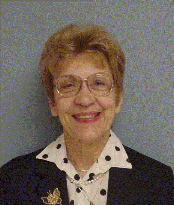Program Information
What to Do: Medical Physicist Assistants

P Halvorsen
G Ezzell
D Fontenla
B Schueler
P Halvorsen
G Ezzell1*, D Fontenla2*, B Schueler3*, (1) Mayo Clinic Arizona, Phoenix, AZ, (2) Memorial Sloan-Kettering Cancer Center, New York, NY, (3) Mayo Clinic, Rochester, MN
Presentations
11:00 AM : Introduction - P Halvorsen, Presenting Author11:05 AM : How the Medical Physicist Assistant can enhance a therapy physics practice - G Ezzell, Presenting Author
11:25 AM : Why the Medical Physicist Assistant model is inappropriate - D Fontenla, Presenting Author
11:45 AM : How the Medical Physicist Assistant can enhance an imaging physics practice - B Schueler, Presenting Author
12:05 PM : Q&A - P Halvorsen, Presenting Author
TU-D-FS2-0 (Tuesday, August 1, 2017) 11:00 AM - 12:15 PM Room: Four Seasons 2
The topic of Medical Physicist Assistants (MPAs) has been actively discussed within the AAPM in recent years, and remains controversial with passionate arguments for and against the use of MPAs in clinical medical physics practice. This session aims to describe the perspectives favoring and opposing the use of MPAs in clinical physics practice, to help the attendees better understand the key factors to consider in determining whether MPAs are appropriate in a given practice setting.
During the Strategic Planning Committee sponsored AAPM Leadership Summit in June 2014, the topic of MPAs was extensively discussed. The group concluded that this issue has broad and deep implications for the future of the medical physics profession, and that the Board of Directors should be consulted for guidance. A motion was brought to the Board at the 2014 Annual Meeting, and approved. The motion was:
“That the American Association of Physicists in Medicine (AAPM) work to develop an appropriate policy and guidance related to the role, training and supervision of Medical Physicist Assistants (MPAs) in supporting clinical medical physics work under the supervision of a Qualified Medical Physicist. Such guidance shall include, but may not be limited to:
1. Developing a Medical Physics Practice Guideline on supervision for MPAs and other support staff (lead: Professional Council).
2. Developing an AAPM Position Statement on the appropriate role, training and supervision of MPAs (lead: Professional Council).
3. Interacting with regulatory and licensing bodies and with other professional societies to advocate for the AAPM’s position related to the appropriate role, training and supervision of MPAs (lead: Administrative Council).
4. Developing the educational curriculum for MPAs (lead: Education Council)”
Following up on the Board directive, the Professional Council developed a Professional Policy on the topic, which was approved by the Board in 2015 and became policy PP-29A. The Practice Guidelines Subcommittee also developed a Medical Physics Practice Guideline on supervision for MPAs, but that document is on hold at the request of AAPM’s Executive Committee while other policy positions are clarified.
Since the practice of medical physics is, to simplify a bit, generally not defined through regulation or protected through licensure in most states (with the exception of initial equipment commissioning and annual machine calibrations), it is quite possible that health systems will look to the use of MPAs as one approach to providing cost-effective care.
As stated to the Board in 2014, the central question for the Association is: Should the Association acknowledge the likely trend toward delegation of tasks under proper supervision, and proactively work to “shape” the regulatory, accreditation and reimbursement landscape in this regard – or would we be better served by preparing such positions as contingencies while continuing to advocate for allowing only Qualified Medical Physicists (QMPs) as defined by AAPM Professional Policy 1 to perform the full scope of medical physics related tasks?
This question was debated in a Point-Counterpoint article in Medical Physics in November 2015, and the two participants in that debate are members of this session’s panel. Dr. Fontenla will present the perspective opposing the use of MPAs in clinical physics practice, and Dr. Ezzell will present the perspective supporting the use of MPAs given clearly defined roles and responsibilities and appropriate supervision by a Qualified Medical Physicist. Dr. Schueler will expand the debate to provide the perspective of imaging physics in a large academic practice.
The many discussion topics at the 2014 Leadership Summit included:
a. Pros and cons of formally acknowledging and defining MPAs. This will be addressed by the panel of speakers at this session.
b. Difference between subfields – therapy, imaging and medical nuclear.
c. Difference between practice environments – academic and consulting.
d. Possible negative impact on medical physics residency funding and on the number of medical physicist positions in the future.
e. The possible negative impact on patient safety by employing MPAs to perform “routine” data collection.
f. Appropriate supervision levels.
The opening statement of the draft Medical Physics Practice Guideline on MPAs reads:
“The design and management of a medical physics practice within a healthcare organization must be principally the responsibility of a Qualified Medical Physicist (QMP). Taking into account local circumstances and resources, there may be certain tasks within the program that the QMP determines can be delegated to a Medical Physicist Assistant (MPA) under the QMP's supervision. Such delegation does not absolve the QMP of legal, ethical or other professional responsibility for the quality of the medical physics practice. The delegated task is in all ways the responsibility of the QMP.” Regardless of one’s personal perspective on MPAs in clinical physics practice, this is a principle that should guide any discussion of delegation of tasks in clinical physics.
Learning Objectives:
1. Understand the external factors influencing the delegation of medical physics related tasks in clinical physics practice
2. Understand the potential risks and benefits of formally acknowledging and defining Medical Physicist Assistants (MPAs) for clinical physics practice
3. Understand the appropriate supervision levels if the responsible Qualified Medical Physicist chooses to delegate certain tasks to MPAs.
Handouts
- 127-35619-425554-126265.pdf (G Ezzell)
- 127-35620-425554-126299.pdf (D Fontenla)
- 127-35621-425554-126929.pdf (B Schueler)
- 127-38371-425554-126379.pdf (P Halvorsen)
- 127-38374-425554-126379.pdf (P Halvorsen)
Contact Email:



